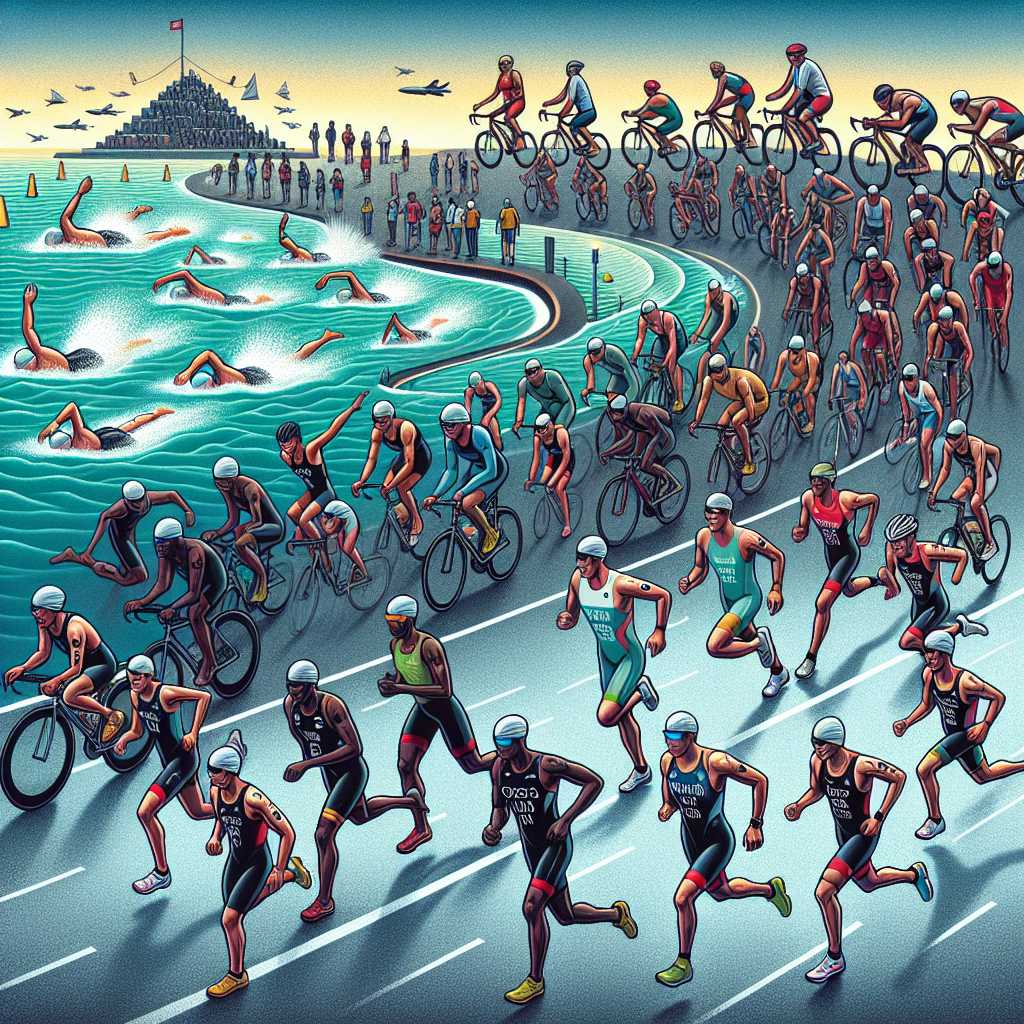Understanding the Olympic Triathlon: Discipline, Endurance and History
The triathlon is a multifaceted endurance race comprising three distinct disciplines: swimming, cycling, and running. The sport, characterized by not only physical stamina but also strategic transitions between stages, has seen rapidly growing popularity since its addition to the Summer Olympic Games in 2000. This article explores the Olympic triathlon’s format, historical background, challenging aspects, and notable athletes.
Triathlon Format and Olympic Standards
The standard distance for the Olympic triathlon, also known as “standard” or “international distance,” involves a 1.5-kilometer swim, a 40-kilometer bike ride, followed by a 10-kilometer run. Hosting this competition requires careful planning and secure courses to ensure minimal interference and maximum safety for the athletes. The chronological order of disciplines—at first put down to safety logistics with considerations for muscle cramping during the swim—has now become a hallmark of the sport. One of the unique aspects of the triathlon is the transition phase, known as ‘T1’ (Swim to Bike) and ‘T2’ (Bike to Run). These are intricate parts of the race where seconds saved can make the difference between a podium place and finishing outside the medals.
Historical Backdrop and Evolution of Olympic Triathlon
The roots of the modern triathlon are often attributed to races held in California in the 1970s, but multi-discipline events can be traced back further. However, the sport witnessed exponential growth in popularity after entering the Olympic domain at the Sydney 2000 Games amidst significant enthusiasm and anticipation.
Since then, each subsequent Olympic event has sought not only to present exemplary standard-distance races but also to innovate for universal appeal. One such innovation was the addition of Mixed Relay triathlon to the Tokyo 2020 (held in 2021 due to the COVID-19 pandemic), underscoring gender equality — a core Olympic value.
Challenges and Struggles within the Event
Competing in a triathlon is not just about physical prowess; it places intrinsic demands on mental fortitude. Athletes must train across three distinct sports while also mastering transitions effectively. Furthermore, because races are set in open environments, as opposed to sanitized or controlled venues, contenders must contend with variable weather conditions and water currents.
Nutrition and hydration strategy play pivotal roles throughout training and on race day. How athletes manage their energy resources can determine their pace and endurance levels towards the latter stages of the race.
Stars of Olympic Triathlon
Throughout its Olympic history, several athletes have emerged who exemplify dedication and excellence within triathlon. Formidable competitors like Simon Whitfield from Canada secured gold in its inaugural debut at Sydney, forever etching his name in history. Likewise, Alistair Brownlee from Great Britain—who took home gold medals in both London 2012 and Rio 2016—showcased remarkable consistency at elite levels.
Adapting to Modern Viewing Habits
As viewership habits evolve with greater digital integration and shorter attention spans, sports including triathlon innovate for increased spectator engagement. The inclusion of GPS tracking, live heart-rate data displays, and creative camera angles offer engaging insights into athlete performance for an immersive viewing experience.
Future Outlook
The rigorously demanding nature of triathlon doesn’t simply rest on current competition formats; it pushes boundaries both physically and in terms of future potentialities within sport integration. As mass participation increases worldwide at amateur levels, one wonders what new narratives will emerge from future games to inspire another generation of triathletes.
Notes
Image Description: A collage showcasing phases of an Olympic Triathlon: a group of athletes diving into crystal clear water for the swimming stage; several cyclists tightly packed during a cycle leg on road bicycles; runners striding on calm pavement amid high focus at twilight hours – symbolizing the enduring spirit and versatile challenge of triathlons.
